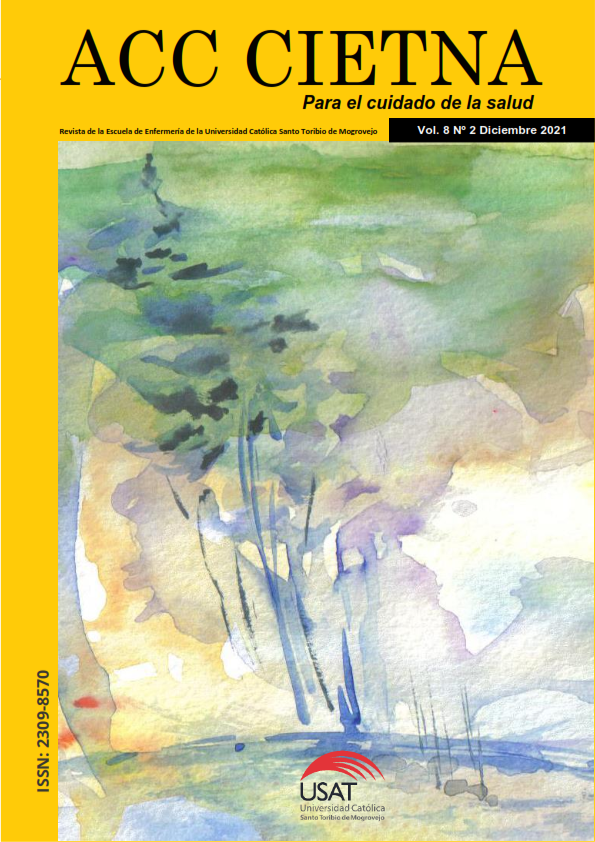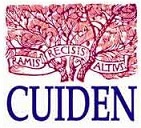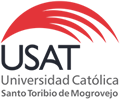Ethnography: importance, relevance and contributions to nursing care
Abstract
This essay is a review of ethnography and its relationship to nursing care. In the case of ethnography, epistemologically it is about immersing a culture and the art of seeing, learning and interpreting reality in through engagement with participants, either openly or secretly in their environment. Therefore, the role of researchers in data collection is crucial in conducting ethnographic research, as this design will generate rich and deep data. The purpose is to understand the background or phenomena under study and require the researcher to conduct field visits, be reflective and consider their own assumptions and premises to strengthen the research findings. As mentioned by Leiniger, ethno-nursing is considered a qualitative research method that focuses on recording, describing, explaining and interpreting the visions, meanings of the objects of information in a natural, open and inductive way, symbols and experiences. In relation to the context of the COVID-19 pandemic, new ideas have been proposed for researchers who are using ethnographic methods and designing and developing projects. These require reinventing and adjusting their data collection strategies in order to carry out new strategies for implementation. It is concluded that there are different mechanisms to develop ethnography to nursing care and implement this method together with different communities to overcome the various challenges they are currently facing, and it has become the top priority of the needs and requirements of an increasingly diverse cultural society.
Downloads
References
Pla M. El rigor en la investigación cualitativa. Aten Primaria [Internet]. 1999 [Consultado 10 Abr 2021]; 24: 295-300. Disponible en: http://www.unidaddocentemfyclaspalmas.org.es/resources/3+Aten+Primaria+1999.El+Rigor+de+la+Investigaci$C3$B3n+Cualitiativa.pdf
Organización Panamericana de la Salud. Investigación cualitativa en enfermería: contexto y bases conceptuales [Internet]. Washington, D. C.: OPS; 2008 [Consultado 10 Abr 2021]. Disponible en: https://iris.paho.org/handle/10665.2/51581
Maira M, Palomare V, del Barrio N, Atares A, Piqueras M, Miñez T. Madeleine Leininger, articulo monográfico. Revista Sanitaria de Investigación (RSI): 2021 [Consultado 10 Abr 2021]. Disponible en: https://www.revistasanitariadeinvestigacion.com/madeleine-leininger-articulo-monografico/
Angrosino, M. Etnografía y observación participante en investigación cualitativa. Madrid: Ediciones Morata 2012. 143p.
Raile Alligood M, Tomey AM. Modelos y teorías en enfermería. Séptima edición. Elsevier 2011.797p.
Lagoueyte Gómez MI. El cuidado de enfermería a los grupos humanos. Rev Univ Ind Santander Salud. 2015; 47(2):209-213
Organización Panamericana de la Salud. Brasil, Universidad de Federal de Santa Catarina. Investigación cualitativa en enfermería. Metodología y didáctica [Internet]. Washington, DC: OPS; 2013 [Consultado 10 Abr 2021]. Disponible en: https://iris.paho.org/handle/10665.2/51587
Guba EG, Lincoln YS. Effective evaluation: improving the usefulness of valuation result through responsive and naturalistic approaches. American Journal of Evaluation [Internet] 1981 [Consultado 13 Abr 2021]; 3(4): 17-22. Disponible en: http://journals.sagepub.com/doi/abs/10.1177/109821408200300406#articleCitationDownloadContainer
Montes L. Una ventana epistémica a la (inter) subjetividad: las potencialidades del método etnográfico. Social Science [Internet]. 2016 [Consultado 15 Abr 2021]; 17(1): 1-20. Disponible en: https://www.ssoar.info/ssoar/handle/document/50623#
Roper JM, Shapira J. Ethnography in nursing research. Thousand Oaks: SAGE Publications [Internet]. 2000 [Consultado 15 Abr 2021]. 150 p. Disponible en: https://onlinelibrary.wiley.com/doi/epdf/10.1046/j.1466-7657.2000.00052.x
Do Prado M, de Souza M, Carroro T. Investigación cualitativa en enfermería, contextos y bases contextuales. Organización Panamericana de la Salud [OPS]: Washington, D.C.2008. 233p.
Leinninger M. Teoría de la diversidad y universalidad de los cuidados culturales. En: Raile M. Modelos y teorías en enfermería. Octava edición. Editorial: Elsevier. Barcelona: España; 2015. 728p.
Hernán, M., Lineros-González, C., Ruiz-Azarola, A. Cómo adaptar una investigación cualitativa a contextos de confinamiento. Gaceta Sanitaria. 2020; 35. 10.1016/j.gaceta.2020.06.007.
Hine C. Etnografía virtual. Barcelona: UOC; 2004. p. 218. Disponible en: https://www.uoc.edu/dt/esp/hine0604/hine0604.pdf.
Sánchez W, Ortiz P. La netnografía, un modelo etnográfico en la era digital. Espacios. 2017; 38: 1–14. Disponible en: https://doi.org/http://www.revistaespacios.com/a17v38n13/a17v38n13p28.pdf.
Sánchez M, Segura A, Gallardo M, Alemany I. Enfermería Transcultural. Formación de los futuros profesionales de Enfermería en España. Index de Enfermería [Internet]. 2018 [Consultado el 6 de mayo de 2021]; 27(4): 247-250. Disponible en: http://scielo.isciii.es/scielo.php?script=sci_arttext&pid=S1132-12962018000300015
Garay J., Jiménez, V., Santos, M., Félix, M. Violencia obstétrica: una mirada desde el interaccionismo simbólico y la etnoenfermería. 2017. Disponible en: http://enfermeria2017.sld.cu/index.php/enfermeria/2017/paper/viewPaper/420
Romero-Guzmán, I., Muñoz-Monteroza, D., Benitez-Cheij, L. Experiencia familiar frente a la muerte materna. Revista ciencia y cuidado, 2020; 17 (2). Disponible en: https://dialnet.unirioja.es/servlet/articulo?codigo=7490964
Ojeda, M., Heidemann, I., Schulter, T., Villa, S. etnoenfermería: cuidados culturales en una comunidad mapuche en Puerto Aguirre, región de aysén-chile. Texto & Contexto – Enfermagem [Internet]; 29(spe): e20190262. Disponible en: https://doi.org/10.1590/1980-265x-tce-2019-0262
Los autores conservan los derechos de autor.
Esta obra está bajo una licencia internacional Creative Commons Attribution 4.0.
Los artículos publicados por la revista científica "Acc Cietna: para el cuidado de la salud" de la Escuela de Enfermería de la Universidad Católica Santo Toribio de Mogrovejo, Chiclayo, Perú están sujetos a una licencia internacional Creative Commons Attribution CC BY 4.0.




















 BIBLIOTECA USAT
BIBLIOTECA USAT